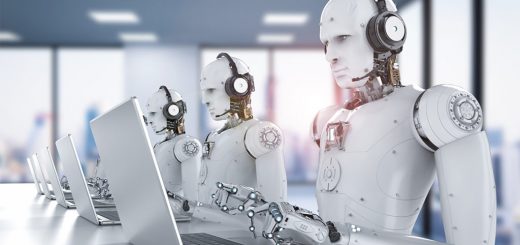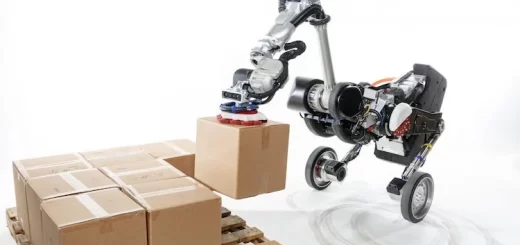Retail robot advantages, disadvantages and What are the robots in stores for?
Retail robots are programmable machines designed to perform specific tasks in retail stores. They collect data that help retailers improve store operations and product placement. Robots can automate repetitive tasks, freeing up human employees for more customer-centric roles.
Retail robots
In some stores, Robots are being tested for in-store delivery, bringing purchases directly to customers. By tracking customer behavior and product interactions, Robots provide valuable data for optimizing store layout and promotions. Some robots act as informative guides, answering basic questions about products and their locations.
Retail robots are transforming the industry by offering greater efficiency, accuracy, and data-driven insights. Robots handle routine tasks, and they excel at precision tasks, minimizing errors in inventory and order fulfillment., so, human employees can focus on customer service and building relationships.
Retail robots are becoming increasingly versatile and can tackle various tasks within a store. They are used to automate tasks and enhance various aspects of the shopping experience. Robots can whiz around shelves, keeping track of inventory levels and ensuring items are always stocked.
Advantages of Retail robots
Retail robots can handle repetitive tasks like stocking shelves, inventory management, and cleaning, freeing up human employees for more customer-centric roles like sales or product expertise, and improving overall efficiency. Retail robots don’t need breaks or vacations. They can work tirelessly, ensuring tasks are completed efficiently around the clock and the store is operational for extended hours, or offering continuous service in warehouses.
Retail robots can scan and track inventory, minimizing errors and ensuring product availability for customers. Advanced robots can collect valuable customer data on shopping habits and product preferences. This data can be used to optimize product placement, improve inventory management, and personalize the shopping experience. This allows retailers to tailor their offerings and promotions for better customer engagement.
Retail Robots are programmed for precision, minimizing errors in tasks like inventory control and order fulfillment. This leads to a more consistent and reliable shopping experience for customers. Robots excel at precision tasks, minimizing errors in inventory management.
Unlike human employees, robots can work and, extend store hours or handle tasks overnight. This can be beneficial for online retailers or stores with high foot traffic. Robots can collect valuable data on customer behavior and product trends. This can help retailers optimize store layout, personalize promotions, and improve product placement for better sales.
Disadvantages of Retail Robots
A major concern is that robots might replace human workers, leading to unemployment in the retail sector. While some jobs might be lost, others might be created in areas like robot maintenance and data analysis. Automation through robots might lead to job losses. This is a major concern, and retraining programs may be needed to help displaced workers.
While robots can answer basic questions, they might lack the human touch for personalized recommendations and emotional intelligence to build rapport with customers or handle complex inquiries. they cannot provide personalized customer service, or emotional connection that human employees can address.
A robot malfunction can disrupt store operations and require technical expertise to fix, potentially causing delays. The cost of developing, purchasing, and maintaining robots can be high. This might be a barrier for smaller retailers or those with tight budgets. Smaller retailers might struggle to keep pace with this technology.
Robots rely on technology, and malfunctions can disrupt operations. Troubleshooting and repairs might require specialists, causing delays and impacting customer service. Robots are susceptible to breakdowns, which can disrupt operations and require technical expertise for repairs. Current robots are best suited for specific tasks. Complex interactions, problem-solving, or handling delicate items might still require human intervention.
What are the robots in stores for?
Boost Efficiency: Robots can take care of tasks like stocking shelves, managing inventory, and cleaning floors, freeing up human employees for more customer-focused roles. With robots, inventory management and order fulfillment become more precise, minimizing errors and ensuring products are readily available.
Provide 24/7 Support: Unlike human employees, robots can work tirelessly, extending store hours or handling tasks overnight. This is particularly beneficial for online retailers or busy stores.
Offer Valuable Insights: By collecting data on customer behavior and product interactions, robots can help optimize store layouts, personalize promotions, and improve product placement for better sales. Robots could assist with loss prevention and monitor for suspicious activity. Robots can patrol stores to detect spills, misplaced items, or other potential hazards, keeping the shopping environment safe.
Stock Management: Robots can zip through aisles, scan inventory levels, and automatically generate reports. This ensures shelves are always stocked and helps prevent out-of-stock situations. Robots can autonomously scan shelves, identify low-stock items, and generate restocking requests. This ensures shelves are always well-maintained and reduces the risk of out-of-stocks.
Warehouse Whizzes: In warehouses and storage areas, robots can handle heavy lifting and efficiently move pallets of goods. This reduces the risk of injuries for human workers and speeds up product movement. In stockrooms, robots can assist with product sorting, palletizing (arranging items onto pallets), and transporting goods.
Cleaning Crew Champs: Robots can be programmed for cleaning tasks, keeping floors sparkling and restrooms sanitized. This frees up employees from other duties and contributes to a more pleasant shopping environment. Imagine robots zipping around aisles, efficiently restocking shelves. This frees up human employees to directly assist customers with product selection or answer more complex questions.
Price Tag Patrol: Those pesky price tag inconsistencies can be a thing of the past. Robots can autonomously scan and update prices, ensuring accuracy and saving time for staff. Robots are equipped with touchscreens or voice interfaces, robots can answer basic customer questions about product location, pricing, and features.
Customer Assistants: While they might not replace friendly cashiers entirely, robots can handle simple customer inquiries and guide them toward desired products. This can be helpful in large stores or during peak hours. In-store robots might help with order fulfillment and handle curbside pickup.
Data Acquisition Experts: Retail robots are data collection machines. They can track customer behavior, monitor product popularity, and identify areas with high traffic. This goldmine of information allows retailers to optimize store layout, promotions, and product placement for better sales. Imagine a robot that remembers your preferences and suggests products you might like.
Data Dudes: By tracking customer traffic and product interactions, robots can provide valuable data on buying trends. This can help retailers optimize store layout, promotions, and product placement for better sales.
You can subscribe to Science Online on YouTube from this link: Science Online
You can download Science Online application on Google Play from this link: Science Online Apps on Google Play
Retail robot importance, drawbacks, what are robots in retail? and will robots take over retail?
Serial Robots review, advantages, disadvantages and what can serial robots do?
Collaborative robot arm (cobot robots) applications, uses, advantages and disadvantages
Automation in manufacturing uses, advantages and disadvantages
Industrial robot (Auto industry) uses, advantages and disadvantages




